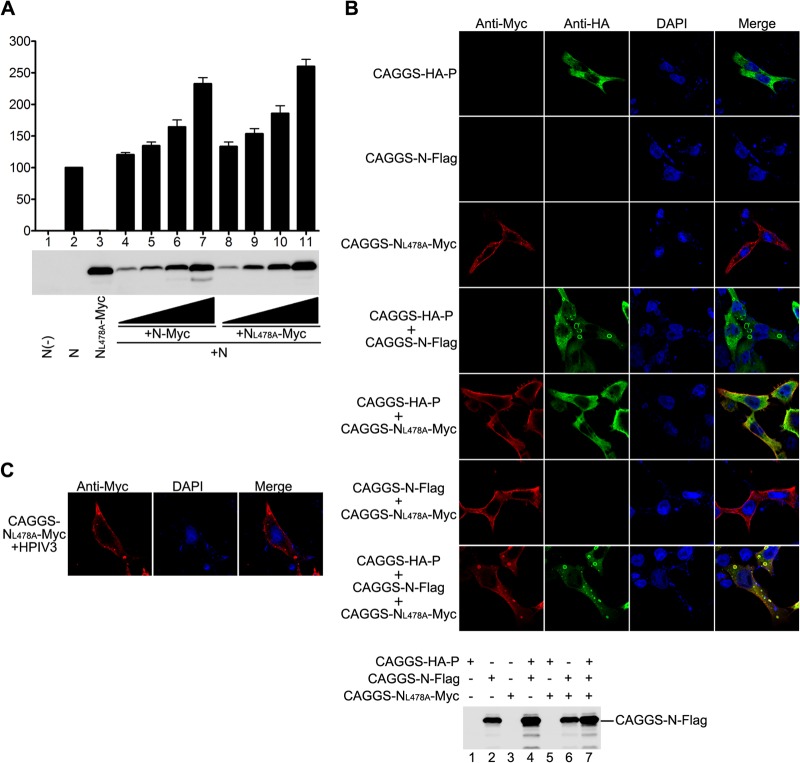Fig 6.
N and NL478A form functional hetero-oligomers. (A) N-Myc rescues the RNA synthesis activity of NL478A-Myc. HeLa cells infected with vTF7-3 were transfected with plasmids encoding untagged N (62.5 ng), P (250 ng), L (100 ng), and minigenome (50 ng) with increasing amounts of plasmids encoding N-Myc or NL478A-Myc. Luciferase activity and protein expression were detected as described for Fig. 1F. (B) N rescues the inclusion body formation of NL478A in the presence of P. HeLa cells were transfected with plasmids encoding N-Flag, CAGGS-NL478A-Myc, and CAGGS-HA-P individually or in various combinations. At 24 h posttransfection, cells were fixed and stained with anti-Myc and anti-HA antibodies and examined via confocal microscopy. The expression of N-Flag was detected via Western blotting with anti-Flag monoclonal antibody. (C) NL478A localizes to inclusion bodies in HPIV3-infected cells. HeLa cells, grown on coverslips, were infected with HPIV3 at a multiplicity of infection of 0.5 or mock infected. At 24 h postinfection, cells were transfected with 2 μg of plasmid encoding CAGGS-NL478A-Myc. At 48 h postinfection, cells were processed as described for panel B and visualized via confocal microscopy.

